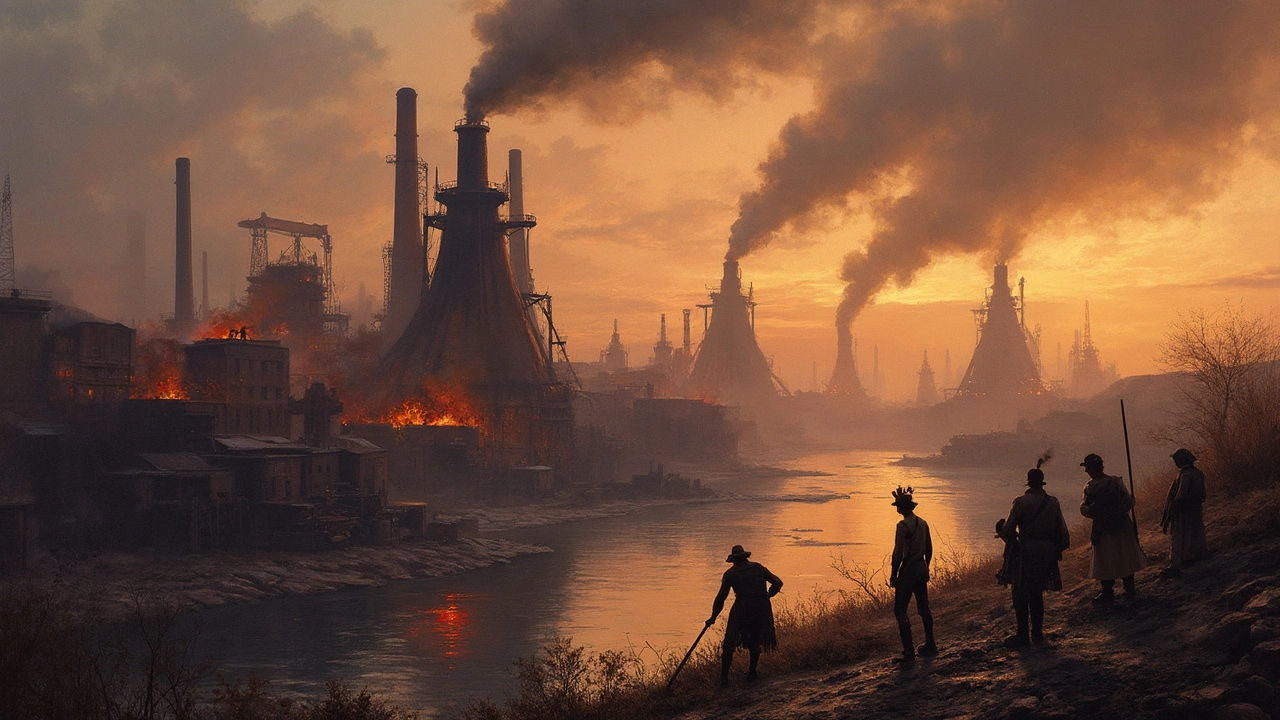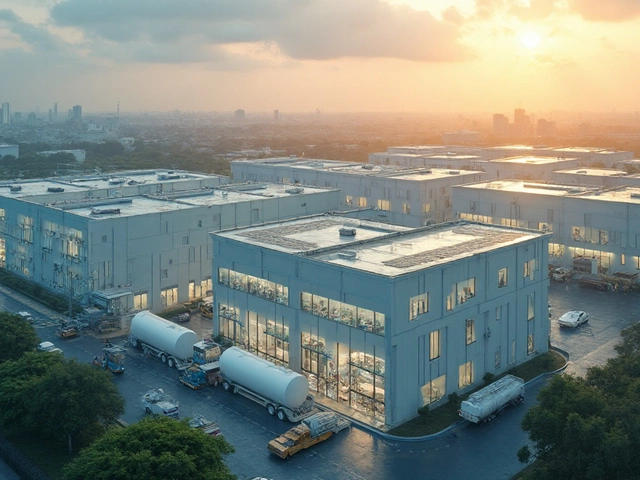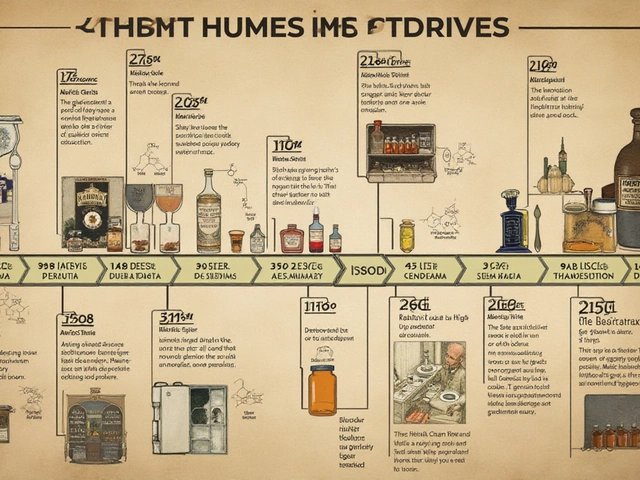Who actually laid the first brick in the American steel world? This isn’t just a question for history buffs. If you’ve ever walked past a bridge, a skyscraper, or a faded old train line, you’ve seen the results of choices made over a hundred years ago by some scrappy steelmakers. The story starts before the Civil War and goes well beyond the faded glory of decades gone by.
Knowing who kicked things off in US steel isn’t just about nostalgia. It’s about understanding the backbone of American industry, from rails to reinforced concrete. Fast fact: the roots go back to 1857 — way before most people assume. And no, it’s not just about Pittsburgh, even though that city loves to claim the steel crown.
Stick around, and you’ll get more than dusty facts. You’ll uncover why names like Bethlehem Steel mean something to millions, and how the lessons from their highs and lows still show up in how steel plants run today. Want to know which company can really call itself the oldest, and what that history means if you work with steel or just geek out on old factories? That’s what we’re digging into.
- The Birth of American Steel
- Meet Bethlehem Steel: Oldest Name Standing
- Milestones That Changed Everything
- What Survived and What Didn't
- Why It Still Matters Today
The Birth of American Steel
If you want to see where it all started, you need to head way back to the mid-1800s. Steel wasn’t just popping up in every city. It took real guts—and deep pockets—to get a steel mill going. Most early American iron and steel operations carved out tiny slices of business until something big changed: railroads.
The American steel scene really picked up steam in 1857, when a group of investors launched the Saucona Iron Company in Pennsylvania. This company is the same one that became the legend we now call Bethlehem Steel. Back then, most metal-producing outfits were still focused on wrought iron or pig iron, not full-on steel. Bethlehem didn’t even roll out its first steel rail until 1873—but the early foundation was there, and it would soon change everything.
Why was 1857 such a big year? The U.S. was finished with the Gold Rush but quickly moving into an era of massive building—railroads, bridges, and even the first skyscrapers demanded something stronger than iron. Bethlehem saw the future before many others did. The risks paid off later, turning them into a heavy player that almost every American city has reason to thank.
- Bethlehem Steel started as Saucona Iron Company in 1857, in South Bethlehem, Pennsylvania.
- The first official steel rail came off their lines in 1873.
- Pennsylvania, especially the Lehigh Valley, became the heart of this new industry.
- Carnegie Steel (in Pittsburgh) started a couple decades later—in 1892.
Check out just how early some of these plants appeared:
| Company Name | Founded | Location |
|---|---|---|
| Bethlehem Steel (as Saucona Iron) | 1857 | Bethlehem, PA |
| Carnegie Steel | 1892 | Pittsburgh, PA |
| U.S. Steel | 1901 | Pittsburgh, PA |
The bottom line? The American steel industry started with small outfits and bold bets—especially with the oldest one rising in Bethlehem, well before names like Carnegie ever hit the headlines. If you’re talking about the oldest steel company in the U.S., Bethlehem Steel holds the title, with roots that go back further than you might expect.
Meet Bethlehem Steel: Oldest Name Standing
If you poke around the history of US steel, Bethlehem Steel is the name that keeps popping up. This company didn’t just make steel; it helped build America, literally. Formed as the Saucona Iron Company in 1857, it changed its name to Bethlehem Iron Company in the 1860s and then finally to Bethlehem Steel in 1904. For a long stretch, this was the oldest running game in town when it comes to oldest steel company in the country.
Bethlehem Steel made huge leaps from a small regional player to a giant that cranked out the steel for skyscrapers, the Golden Gate Bridge, and even World War II ships. They operated from the city of Bethlehem, Pennsylvania—which explains the name. At its peak in the 1940s, the company was the second-largest steel producer in the United States.
To get a sense of just how massive their impact was, check out these numbers:
| Fact | Details |
|---|---|
| Founded | 1857 (as Saucona Iron Company) |
| Location | Bethlehem, Pennsylvania |
| Peak Employment | Over 300,000 workers during World War II |
| Products | Steel beams, rails, warships, skyscraper frames |
| Signature Projects | Golden Gate Bridge, Empire State Building, WW2 Liberty Ships |
| Shut Down | 2003 |
Want to know why Bethlehem Steel stayed relevant for so long? It wasn’t luck. They were the early adopters of the Bessemer and later the open-hearth processes—think of these as big breakthroughs that let plants pump out way more steel, faster and cheaper. The company also made a name by taking on wild government contracts for warships, with their own shipyards and blast furnaces humming day and night during the wars.
When it comes to American icons, their steel is practically everywhere. Step onto the George Washington Bridge or cruise under New York’s skyline, and chances are some of those bones are Bethlehem Steel. Even today, factories, bridges, and historic buildings all over the U.S. still have their products in place.
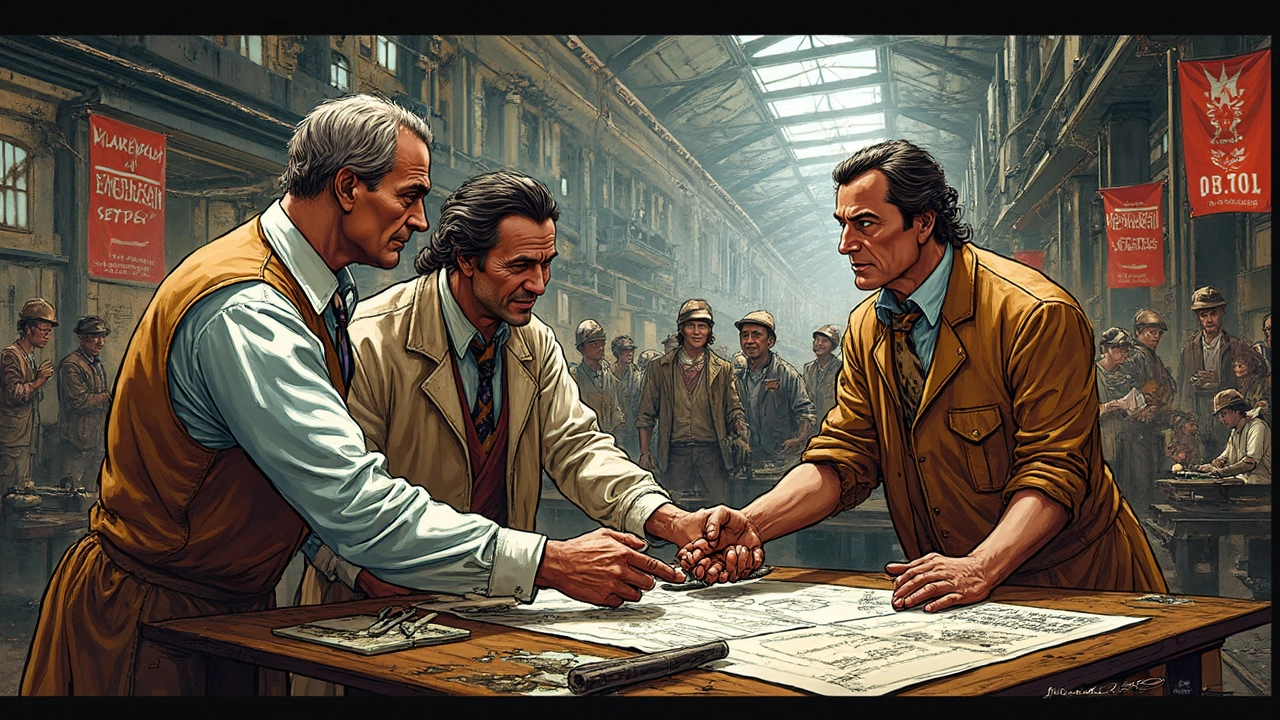
Milestones That Changed Everything
The US steel industry didn’t just pop up overnight. The companies that paved the way hit some key turning points that still shape how steel is made and used today. If you check the history books, you’ll see that these moments weren’t just about building bigger factories—they changed the whole way America built itself.
Let’s get straight to the oldest steel company talking points. Back in 1873, the Bethlehem Iron Company fired up its first blast furnace in Bethlehem, Pennsylvania. These guys didn’t just make rails for trains. By 1899, they’d renamed themselves Bethlehem Steel and were pumping out steel beams that went into major American skyscrapers like the Chrysler Building and Rockefeller Center.
- In 1901, Bethlehem Steel invented the "H-beam," making taller and more stable buildings possible. That’s why cities started growing up, not just out.
- During World War I and II, Bethlehem Steel supplied warships and armor for the U.S. military—they actually built about 1,121 ships just during WWII.
- The company was pulling in over $1 billion a year at its peak in the 1950s, supporting more than 300,000 jobs.
Here’s some quick stats about milestone moments:
| Year | Milestone Event | Impact |
|---|---|---|
| 1857 | Bethlehem Iron Company founded | Laid groundwork for American steel |
| 1873 | First blast furnace fired | Large-scale steel production begins |
| 1901 | H-beam invention | Modern skyscraper construction possible |
| 1941-1945 | WWII shipbuilding | Over a thousand ships built, massive job growth |
| 1950s | Peak profits and employment | Steel became America’s backbone |
Tech upgrades, mass production, and a focus on worker safety kept raising the bar. Each turning point made steel cheaper, stronger, and more important in everyday life. Bottom line: if you've lived or worked anywhere near a big city, highways, or major bridges, something Bethlehem Steel did probably made it possible.
What Survived and What Didn't
Not every giant in American steel kept its crown. Some faded, some merged, and a few scrappy survivors adapted just enough to stick around. The most famous loss? Bethlehem Steel. This company once helped build the Golden Gate Bridge, the Chrysler Building, and tons of World War II ships. But by 2001, Bethlehem Steel filed for bankruptcy, a victim of cheaper imports and failing to modernize fast enough. Today, the old Bethlehem plant is a music venue and arts center—a wild twist for a brand that once rolled the world’s biggest beams.
Then there's U.S. Steel. It’s survived the market swings, foreign competition, and mad rushes to automate. Maybe not as massive as in its heyday, but the name is still around. Their ability to shake things up—closing old mills, betting on new, eco-friendly tech—keeps them in the game even if they’re not topping production charts.
Other legendary names, like Jones & Laughlin or Youngstown Sheet & Tube, didn’t make it. Some were absorbed by bigger players. American steel's landscape is littered with famous shut-down mill towns, especially through Pennsylvania and Ohio. But companies that pushed digital controls, lighter materials, and recycling built new niches for themselves.
- Oldest steel company title technically goes to companies that managed to merge, rename, or pivot without losing that original charter. U.S. Steel, born from a chunk of Andrew Carnegie’s empire, is the closest modern link to those 19th-century upstarts.
- Places like ArcelorMittal—foreign-owned, but with roots deep in American steel—picked over the bones of the old giants and snapped up useful tech, real estate, and know-how.
- Steelworkers' unions also survived and now focus on worker safety, retraining, and fair wages just as much as on old-school contract fights.
One thing didn’t survive: the idea that steel had to be made with endless smoke and soot. Modern survivors use electric arc furnaces and cleaner processes. There’s a new face to steel, built on what worked from the past and ditching what didn’t keep pace.
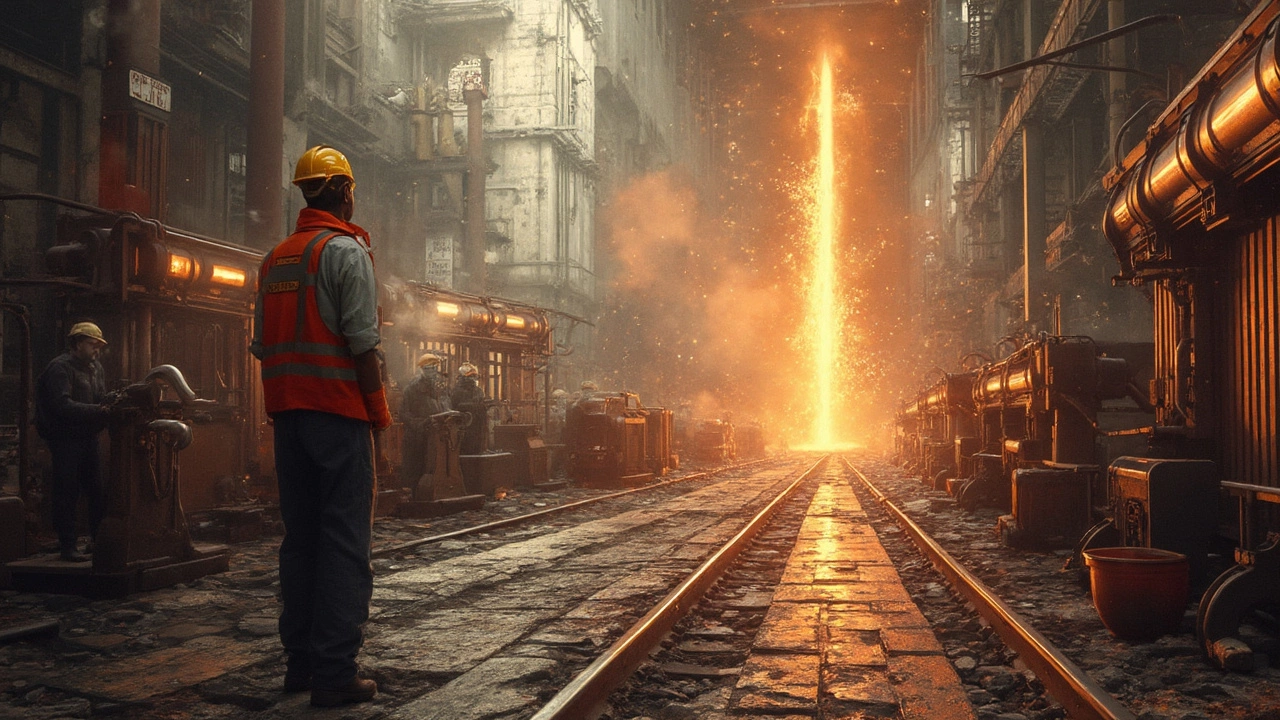
Why It Still Matters Today
Most people think the story of the oldest steel company in the US is just some old business trivia, but its impact is everywhere—from how cities look to what kind of jobs exist in your town. Even after old companies like Bethlehem Steel shut down, their influence hasn’t disappeared. It’s baked into how we build, work, and even think about manufacturing in America.
Take American bridges and skyscrapers. Many, like the Golden Gate Bridge or the Chrysler Building, used steel made by these pioneers. When you learn that the Pentagon used more than 43,000 tons of steel during WWII—most coming from historic Pennsylvania plants—you start to see that these early companies changed what was even possible in construction.
Jobs are another big piece. At its peak, Bethlehem Steel alone employed over 300,000 people. The company helped shape what a “good job” looked like: unions, steady wages, and a work culture that still shows up today in manufacturing. Even though the heyday of steel is over, many small US factories still follow the same playbook around safety and skills training that was invented back in the 1900s.
Looking at numbers says a lot, too. Here’s how Bethlehem Steel and the wider US steel scene stacks up:
| Company | Peak Employment | Peak Yearly Output (tons) | Year Founded |
|---|---|---|---|
| Bethlehem Steel | 300,000+ | 23 million | 1857 |
| U.S. Steel | 340,000 | 26 million | 1901 |
Today, steel itself is getting cleaner and smarter with new tech like electric arc furnaces, but the DNA of the industry is straight from the old giants—combining muscle, skill, and a sense of pride in making things that last. If you’re in construction or engineering, you’ve probably heard stories about legendary plants or old timers who "did it right" the way Bethlehem did. That mindset is part of what keeps US manufacturing alive and still competing globally.
So, no, this isn’t just history—it's the foundation for how things get built, how people work, and even how the US sees itself as a country that makes real things, not just ideas.
